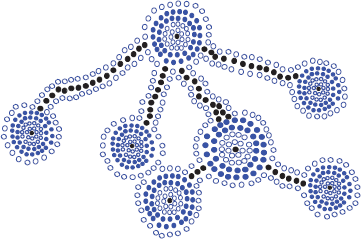Chapter 10. Search Trees

Contents
10.1 Binary Search Trees | 424 |
10.1.1 Searching | 426 |
10.1.2 Update Operations | 428 |
10.1.3 C++ Implementation of a Binary Search Tree | 432 |
10.2 AVL Trees | 438 |
10.2.1 Update Operations | 440 |
10.2.2 C++ Implementation of an AVL Tree | 446 |
10.3 Splay Trees | 450 |
10.3.1 Splaying | 450 |
10.3.2 When to Splay | 454 |
10.3.3 Amortized Analysis of Splaying* | 456 |
10.4 (2,4) Trees | 461 |
10.4.1 Multi-Way Search Trees | 461 |
10.4.2 Update Operations for (2,4) Trees | 467 |
10.5 Red-Black Trees | 473 |
10.5.1 Update Operations | 475 |
10.5.2 C++ Implementation of a Red-Black Tree | 488 |
10.6 Exercises | 492 |
Binary Search Trees
All of the structures that we discuss in this chapter are search trees, that is, tree data structures that can be used to implement ordered maps and ordered dictionaries. Recall from Chapter 9 that a map is a collection of key-value entries, with each value associated with a distinct key. A dictionary differs in that multiple values may share the same key value. Our presentation focuses mostly on maps, but we consider both data structures in this chapter.
We assume that maps and dictionaries provide a special pointer object, called an iterator, which permits us to reference and enumerate the entries of the structure. In order to indicate that an object is not present, there exists a special sentinel iterator called end. By convention, this sentinel refers to an imaginary element that lies just beyond the last element of ...
Get Data Structures and Algorithms in C++, Second Edition now with the O’Reilly learning platform.
O’Reilly members experience books, live events, courses curated by job role, and more from O’Reilly and nearly 200 top publishers.

